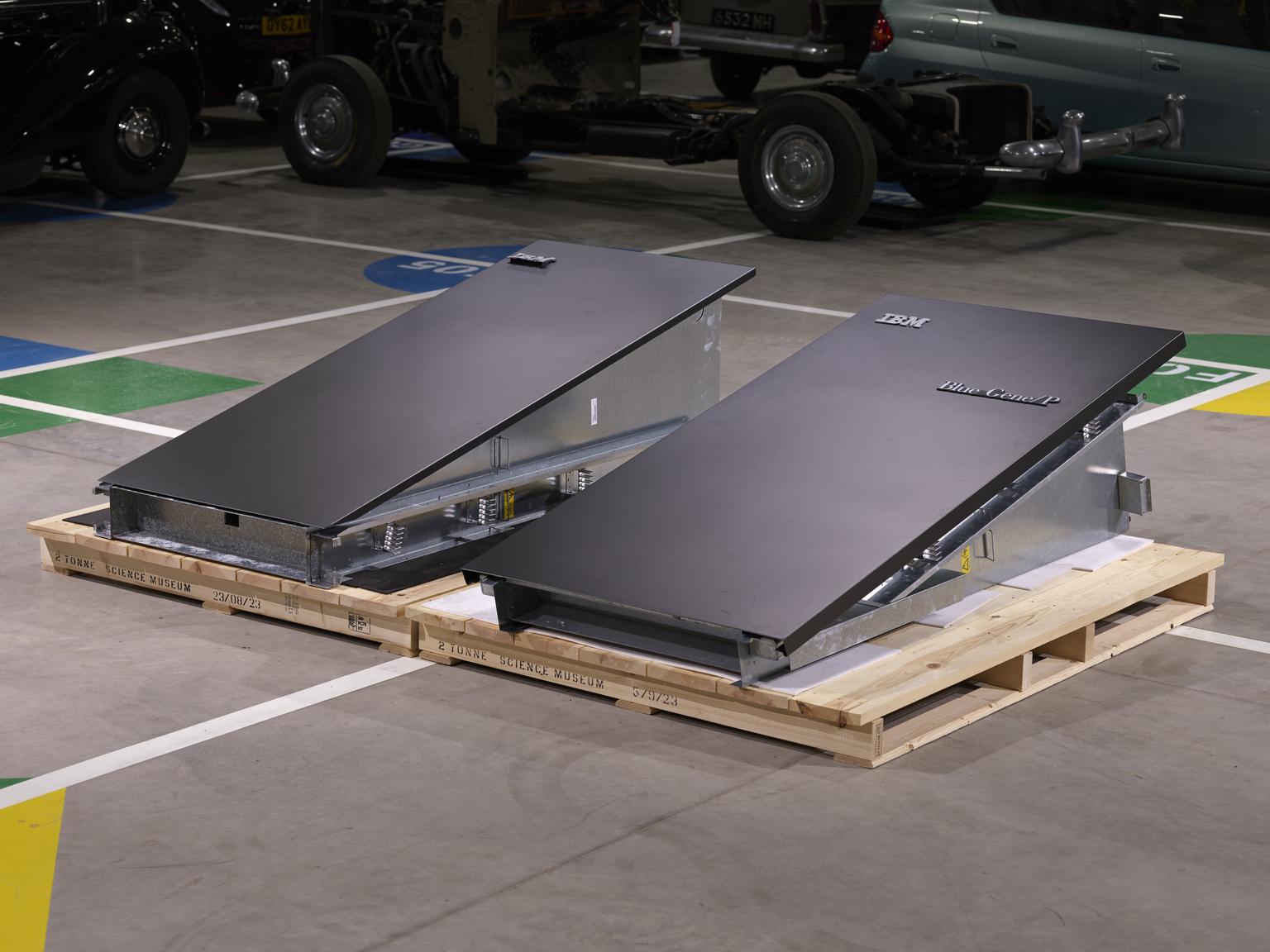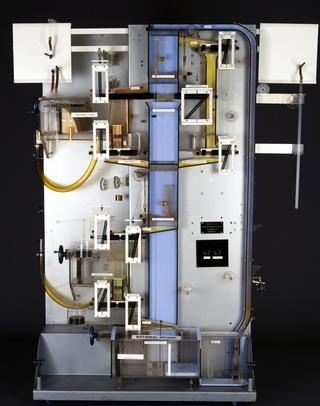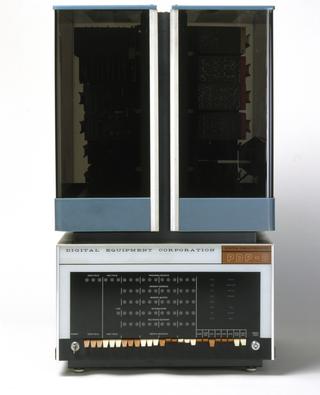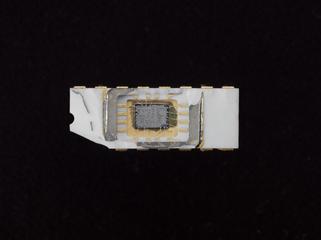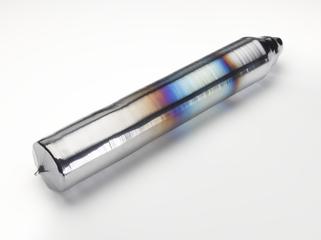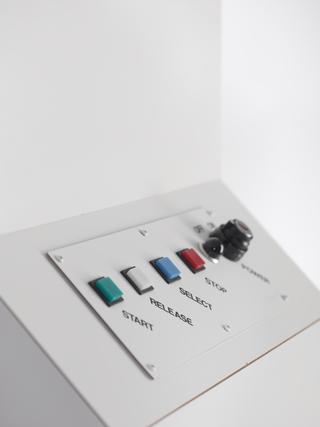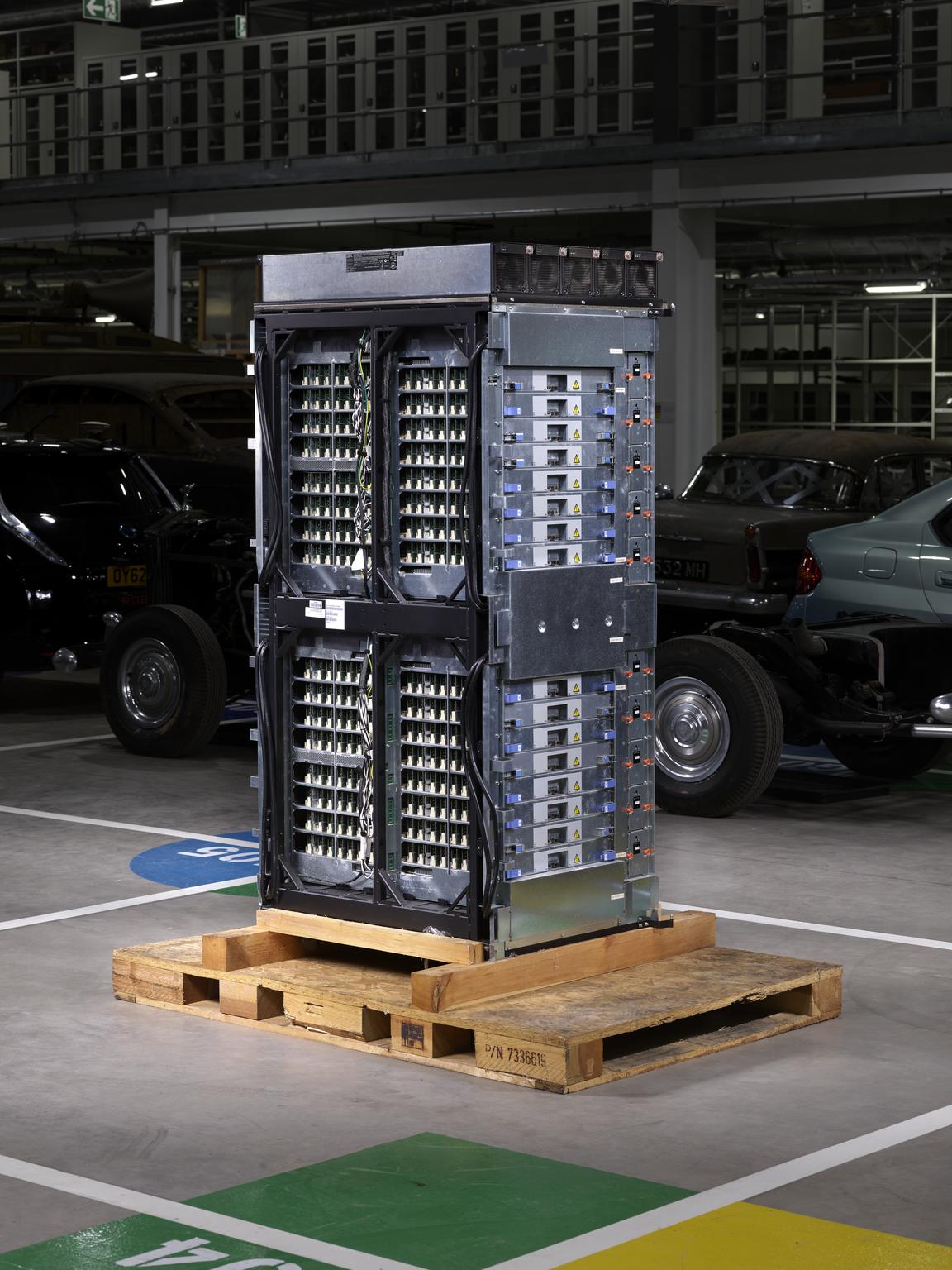
Rack of IBM Blue Gene/P Supercomputer
Main part of rack of IBM Blue Gene/P Supercomputer with inlet plenum and cover, installed at Daresbury Laboratory, 2007
More
The Blue Gene/P computer was targeted by IBM primarily at national laboratories and universities that conduct calculations so complex no other computer would be able to perform them. This particular example was used at Daresbury Laboratory. Since the early 1960's the organisations that now constitute the Science and Technologies Facilities Council (STFC) have provided significant computing facilities to UK science. This Blue Gene/P represents a continuation of this long history.
The Blue Gene/P was part of the NW-GRID (funded by the North West development Agency). It was used to establish Grid computing across the North West of England, including many users across Lancaster, Manchester Liverpool Universities and Daresbury. Two example projects it was used on at Daresbury are:
- Development of turbulence models for EDF (used in their simulations of Power Stations and Nuclear Power Stations) by Daresbury/Manchester/EDF:
- Simulation of the active ingredient in Shampoo and laundry detergent by Daresbury/Manchester/EDF.
Ownership of a Blue Gene computer enables a research laboratory to be part of an exclusive High Performance Computing (HPC) World leadership club. The IBM Blue Gene series (BG/L, BG/P and BG/Q) represent IBM’s aim to be the company capable of leading the world in HPC systems.
One Blue Gene/P supercomputing rack can perform 13.9 trillion operations per second and 350 million operations per watt. Blue Gene/P was 75% more efficient than its predecessor -- Blue Gene/L.
- Materials:
- metal (unknown) , plastic (unidentified) and electronic components
- Object Number:
- 2013-90/1
- type:
- supercomputer
- Image ©
- The Board of Trustees of the Science Museum
